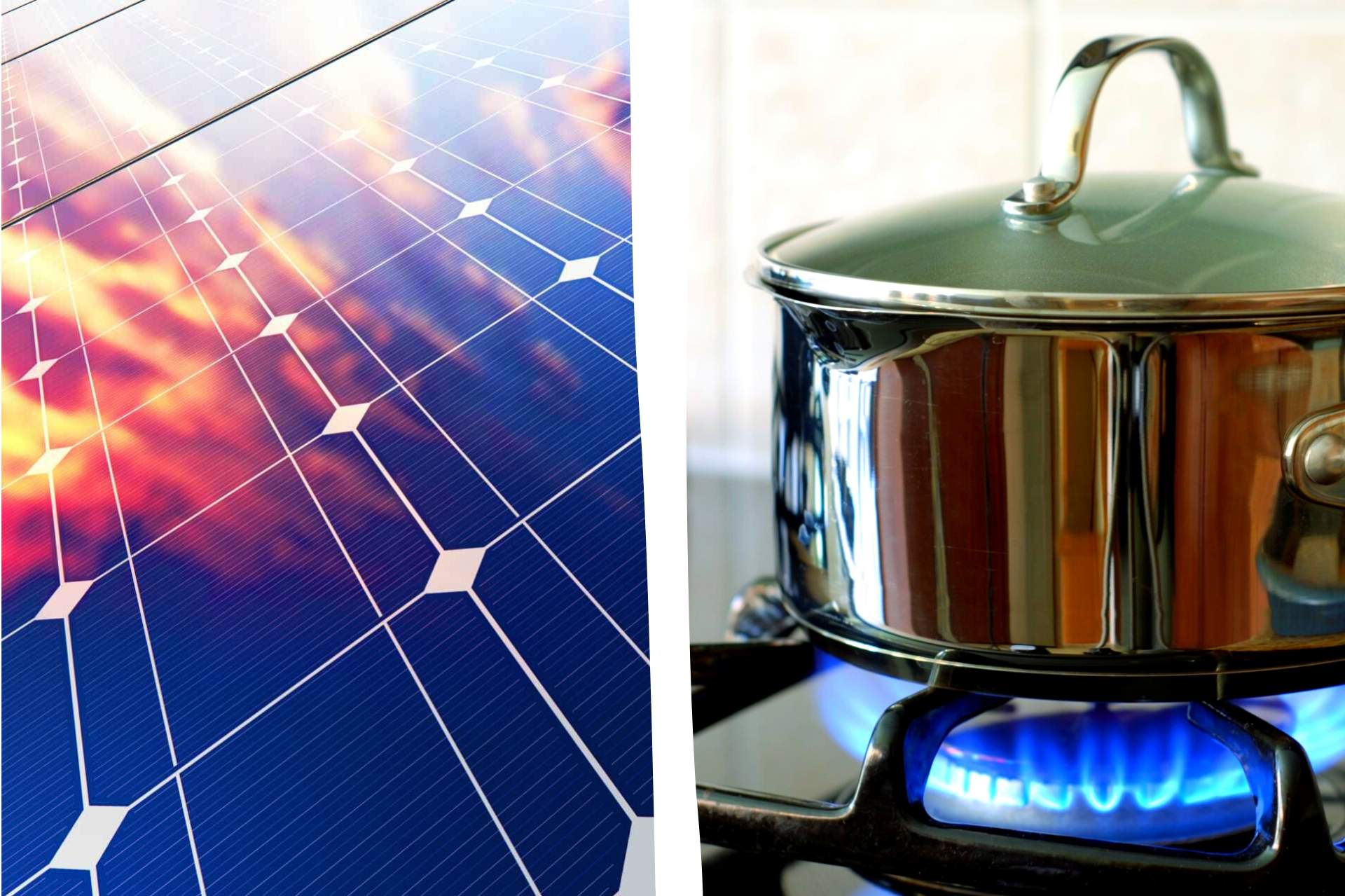
If you have a house or condo and pay for an electric bill, at some point or another you’ve probably been tasked with the option of choosing renewable energy like solar energy or fossil fuel-based power from natural gas. But what’s really the difference between them, and which one is better for the environment (and your wallet)? The differences may be vast, but each are worth exploring.
Natural gas, like coal and oil, is a fossil fuel that formed when prehistoric plants and animals died and were buried by layers of rock over time.1 All of them are non-renewable, meaning they cannot be easily and quickly replenished. Hence, when we deplete these resources, they are gone – they cannot be man-made.
Solar energy, on the other hand, is derived from the sun, which cannot be depleted. The most common forms of renewable energy resources are biomass, geothermal, hydropower, solar, and wind – all of which can be renewed and replenished over time to use again and again.
Here are a few differences between the two:
| Natural Gas | Solar Energy |
|---|---|
| Non-renewable energy source | Renewable energy source |
| Produces carbon emissions | Does not produce carbon emissions |
| Fuel required for operation | No fuel required for operation |
| Takes more frequent maintenance | Easier to sustain over time |
With the world increasingly focused on how our actions impact the environment, many people are becoming concerned with where they get their energy from and just how clean and efficient it really is. For many Americans, that source is none other than natural gas.
First, the extraction of natural gas has its own environmental impacts. During drilling for natural gas, methane — a greenhouse gas 30 times more potent at trapping heat than CO2 — can leak from wells and pipelines.2 Then comes fracking, another process of extracting natural gas that entails injecting millions of gallons of water, sand and chemicals into open rock deep beneath the Earth’s surface. This frees any natural gas trapped withinThe process of fracking is unregulated and poses the risk of contaminating underground water supplies.3
After the natural gas is mined, you must burn it to produce electricity. However, burning natural gas every day to power your home can have a big impact on the environment – exactly how big, though? According to the Department of Energy, over the past 20 years, nearly 75% of human-caused emissions came from the burning of fossil fuels.4
Millions of Americans continue to use natural gas in their home everyday, powering their stove, water heater and, for some, their entire household As of 2020, the average household in the United States producing 7.5 tons of CO2 per year.5
Out of all the fossil fuels, natural gas is the cleanest. It emits fewer amounts of toxic chemicals such as nitrogen oxides and sulfur dioxide, and compared to other non-renewable electricity sources, natural gas produces half the carbon dioxide as coal and about a third less than oil, making it the gas option with the least amount of emissions.6
Natural gas is a more popular option for electric providers and homeowners across America. The clean-burning properties of natural gas have contributed to an increase in natural gas use for the electricity generation, as well as transportation fuel for fleet vehicles in the United States.7 According to the U.S. Census, about 48% of all U.S. homes use natural gas for heating, while natural gas electricity is used in 37% of homes.8
So, what about solar energy?
If you are considering your carbon footprint and want to make a change in society, choosing solar energy to power your home is the best, most efficient option.
In the United States alone, about 30% of greenhouse gas emissions come from generating electricity – specifically from coal and natural gas. However, while solar energy yields no emission and no fossil fuels, it does require a certain amount of energy to make the solar panels, install the equipment, and operate it.
Still, the impact is low and does not counteract the benefits of solar energy. When factoring in the entire life cycle of clean energy (including the emissions from each stage of the technology’s life, from manufacturing and installation to operation and decommissioning), the total emissions associated are minimal.9 The total life cycle emissions for solar energy rounds out at about 6 grams of CO2 equivalent, compared to the life cycle emissions of gas, which is about 78 grams of CO2 equivalent.10
Solar panel technology lasts for 30 years on average and pays back installment investment in a third of that time. Not to mention that the sun, it’s main power source, is the most renewable energy source!
First and foremost, it’s free. We receive a constant supply of energy from the sun — no drilling, no extracting and no fracking required. And with an average annual growth rate of 50%, solar energy is experiencing a major surge in popularity for three reasons:
As the popularity for solar energy grows, solar energy prices become more affordable and accessible. The average price to install solar fell more than 70% between 2010 and 2017, and the cost of wind power plunged 66% between 2009 and 2016.9 As the nation progresses toward cleaner energy, costs will likely go down even more.
To power your home, the clear choice is solar energy (and of course we would pick solar). From affordable prices to environmental benefits on every front, from production to use, solar energy remains the top winner. In some states, however, solar energy is not as easily accessible. If you are in a state that only provides non-renewable energy options, natural gas is the way to go.
But of course, if you have the option, definitely go solar. After all, the sun is free and unlimited!
Sources: